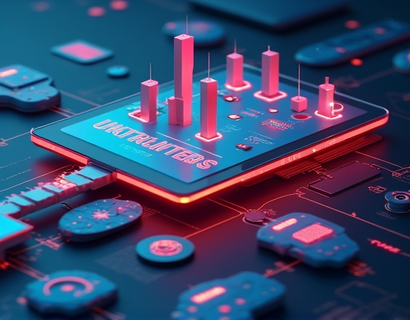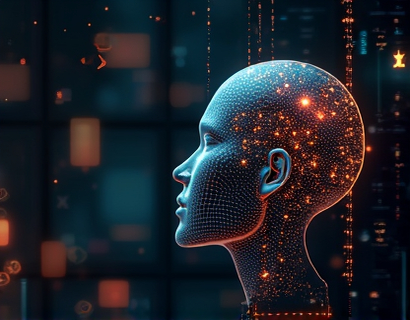AI Chat Avatar: Revolutionizing Digital Conversations with Advanced Technology
The digital landscape is rapidly evolving, and with it, the ways we interact with technology are transforming. One of the most exciting developments in this realm is the emergence of AI chat avatars, sophisticated virtual entities designed to engage users in meaningful and insightful conversations. These AI-powered companions are not just a novelty; they represent a significant leap forward in human-computer interaction, offering a seamless and enlightening experience for tech enthusiasts and anyone curious about the potential of artificial intelligence.
The concept of an AI chat avatar is straightforward yet profound. It involves creating a virtual personality that can understand, process, and respond to human input in a way that mimics natural conversation. This technology leverages advanced natural language processing (NLP) and machine learning algorithms to create a dialogue that feels authentic and engaging. The result is a digital companion that can provide information, assist with tasks, and even offer companionship, all through intuitive and user-friendly interactions.
Understanding the Technology Behind AI Chat Avatars
To truly appreciate the capabilities of AI chat avatars, it's essential to delve into the technology that powers them. At the core of these avatars is a combination of NLP and machine learning. NLP enables the avatar to understand and interpret human language, breaking down sentences into meaningful components and extracting intent and context. Machine learning, on the other hand, allows the avatar to learn from interactions, improving its responses over time and adapting to individual user preferences.
One of the key components in building an effective AI chat avatar is the use of conversational models. These models are trained on vast datasets of human conversations, enabling the avatar to recognize patterns and generate responses that are contextually relevant. Techniques such as sequence-to-sequence learning and transformer models have been instrumental in advancing the quality of these conversations, making them more fluid and natural.
Applications of AI Chat Avatars
The applications of AI chat avatars are diverse and far-reaching, touching various sectors and industries. In customer service, for instance, these avatars can provide 24/7 support, handling queries and resolving issues efficiently. They can guide users through complex processes, offer product recommendations, and even empathize with customer frustrations, all while maintaining a professional and helpful demeanor.
In education, AI chat avatars can serve as personalized tutors, adapting to the learning pace and style of each student. They can provide explanations, answer questions, and offer additional resources, making learning more interactive and effective. For individuals with disabilities, these avatars can act as assistive tools, facilitating communication and access to information.
The entertainment industry is another area where AI chat avatars are making waves. Virtual characters in games and interactive stories can engage players in deeper, more immersive experiences. These avatars can respond to player actions, create dynamic narratives, and even develop relationships with users, enhancing the overall gaming experience.
Designing an Engaging AI Chat Avatar
Creating an AI chat avatar that resonates with users involves a thoughtful design process. The first step is defining the avatar's personality and role. This includes determining its tone, language style, and the type of interactions it will engage in. For example, a chat avatar designed for customer service might adopt a friendly and professional tone, while one for entertainment might be more playful and creative.
Visual design is also crucial. The avatar's appearance, whether it's a text-based interface or a graphical representation, should be appealing and consistent with the brand or purpose. For text-based avatars, careful consideration of font, color, and layout can enhance readability and user engagement. Graphical avatars benefit from expressive designs that convey emotions and personality, making interactions more relatable and enjoyable.
Another important aspect is the conversational flow. The avatar should be able to handle a wide range of topics and questions, providing relevant and helpful responses. This requires robust NLP capabilities and a well-structured knowledge base. The avatar should also be able to recognize and respond to user emotions, demonstrating empathy and understanding. Techniques such as sentiment analysis can help achieve this, allowing the avatar to adjust its responses based on the user's emotional state.
Case Study: An AI Chat Avatar for Educational Purposes
To illustrate the potential of AI chat avatars, let's consider a specific example: an AI chat avatar designed for educational purposes. This avatar, named EduBot, is designed to assist students in their learning journey. EduBot can be integrated into educational platforms, providing instant answers to questions, explaining complex concepts, and offering additional learning resources.
EduBot's personality is that of a knowledgeable and patient tutor. It uses a friendly and approachable tone, making students feel comfortable asking questions. The avatar's visual design features a customizable avatar that can be adjusted to match the educational brand, enhancing brand consistency and recognition.
One of the key features of EduBot is its ability to adapt to individual learning styles. Through machine learning, it can identify which topics a student finds challenging and tailor its explanations accordingly. For instance, if a student is struggling with a particular math concept, EduBot can provide step-by-step breakdowns, visual aids, and practice problems to reinforce understanding.
EduBot also keeps track of the student's progress, offering personalized feedback and recommendations for further study. It can integrate with other educational tools and platforms, creating a seamless learning experience. By leveraging NLP, EduBot can understand and respond to a wide range of questions, from simple fact-based queries to more complex analytical discussions.
Users have reported that interacting with EduBot has made learning more engaging and less intimidating. The avatar's ability to provide immediate feedback and support has been particularly appreciated, allowing students to learn at their own pace without the pressure of a traditional classroom setting.
Challenges and Considerations
While AI chat avatars offer numerous benefits, there are also challenges and considerations to keep in mind. One of the primary concerns is ensuring the accuracy and reliability of the information provided. Misinformation can have serious consequences, especially in fields like healthcare and finance. Therefore, it's crucial to maintain and regularly update the knowledge base, ensuring that the avatar's responses are based on the latest and most accurate data.
Privacy and security are also paramount. User data must be handled with the utmost care, adhering to strict privacy policies and compliance with regulations such as GDPR. Transparency about data usage and providing users with control over their information is essential in building trust.
Another challenge is the emotional and ethical aspect of AI interactions. While AI chat avatars can simulate empathy and understanding, they lack true emotions. It's important to manage user expectations and avoid creating a false sense of companionship. Ethical guidelines should be established to ensure that the avatar's interactions are respectful and appropriate, avoiding any form of bias or discrimination.
The Future of AI Chat Avatars
As AI technology continues to advance, the potential for AI chat avatars is immense. Future developments may include more sophisticated emotional intelligence, allowing avatars to better understand and respond to human emotions. Advancements in multimodal interaction, combining text, voice, and visual cues, will make conversations even more natural and intuitive.
Integration with other smart devices and systems will enable AI chat avatars to provide a more holistic and connected experience. For example, an avatar could coordinate with a smart home system to assist with daily tasks, from adjusting the thermostat to ordering groceries. In healthcare, AI chat avatars could monitor patients' health in real-time, providing timely advice and alerts to medical professionals when necessary.
The rise of augmented reality (AR) and virtual reality (VR) will also open new avenues for AI chat avatars. Imagine interacting with a virtual assistant in a fully immersive environment, where the avatar can use gestures and spatial awareness to enhance the interaction. This could revolutionize fields such as training, simulation, and entertainment.
Conclusion
AI chat avatars represent a significant advancement in digital interaction, offering a blend of intelligence, personality, and utility. By leveraging cutting-edge technology, these virtual companions are poised to transform how we engage with technology, making interactions more natural, informative, and enjoyable. As the technology continues to evolve, the possibilities for AI chat avatars are endless, promising a future where digital conversations are as rich and meaningful as those with human counterparts.























